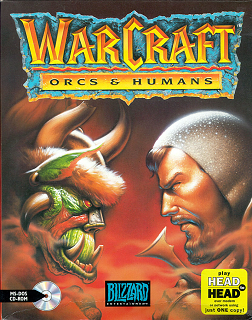
Warcraft: Orcs & Humans is a real-time strategy game (RTS) developed and published by Blizzard Entertainment, and published by Interplay Productions in Europe. It was released for MS-DOS in North America on 15 November 1994, and for Mac OS in early 1996. The MS-DOS version was re-released by Sold-Out Software in 2002.

Tony Hawk's Pro Skater, released as Tony Hawk's Skateboarding in the UK, Australia, New Zealand, and parts of Europe, is a 1999 skateboarding video game developed by Neversoft and published by Activision. It was released for the PlayStation on September 29, 1999 and was later ported to the Nintendo 64, Game Boy Color, Dreamcast, and N-Gage.
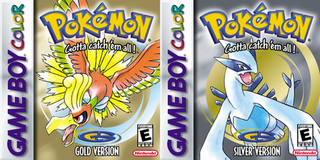
Pokémon Gold Version and Pokémon Silver Version are 1999 role-playing video games developed by Game Freak and published by Nintendo for the Game Boy Color. They are the first installments in the second generation of the Pokémon video game series. They were released in Japan in 1999, Australia and North America in 2000, and Europe in 2001.

Tony Hawk's Pro Skater 2 is a 2000 skateboarding video game developed by Neversoft and published by Activision. It is the second installment in the Tony Hawk's series of sports games and was released for the PlayStation in 2000, with subsequent ports to Microsoft Windows, Game Boy Color, and Dreamcast the same year. In 2001, the game was ported to the Mac OS, Game Boy Advance, Nintendo 64, and Xbox. The game was later ported to Windows Mobile and Windows Phone devices in 2006 and to iOS devices in 2010.

Pac-Man Vs. is a 2003 maze video game developed by Nintendo and published by Namco for the GameCube. In the game, one player takes control of Pac-Man, who must eat all of the pellets in the maze, while the others control the ghosts to try to catch them. The objective is to be the first to reach a set number of points, selected before the game begins. The player controlling Pac-Man uses the Game Boy Advance to play, while the others use the television to control the ghosts. The game requires the GameCube - Game Boy Advance link cable in order to play.

The Transfer Pak is a removable accessory for the Nintendo 64 controller that fits into its expansion port. When connected, it allows for the transfer of data between supported Nintendo 64 (N64) games and Game Boy or Game Boy Color (GBC) games. By using the Transfer Pak, players can unlock additional content in compatible games; the Pokémon Stadium games, with which the Transfer Pak was initially bundled for sale, also feature the ability to emulate specific Game Boy Pokémon titles for play on the N64.

Mr. Driller Drill Spirits is a 2004 puzzle video game developed and published by Namco for the Nintendo DS. Controlling one of six characters, the player must make it to the bottom of each stage by destroying, colored formations of blocks while preventing their oxygen meter from depleting. Multiple different gamemodes are present, including a single-player campaign, a time-attack mode, and a competitive multiplayer mode. It is the sixth entry in the Mr. Driller series.

Mickey's Racing Adventure is a racing video game developed by Rare and published by Nintendo for the Game Boy Color in 1999. It was followed by Mickey's Speedway USA in 2001.
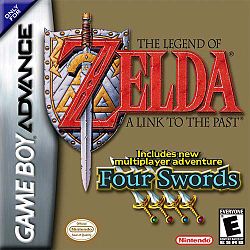
The Legend of Zelda: A Link to the Past and Four Swords is a compilation of two action-adventure games co-developed by Nintendo R&D2 and Capcom and published by Nintendo for the Game Boy Advance. The game was released in December 2002 in North America and in March 2003 in Japan and Europe. The cartridge contains a modified port of A Link to the Past, originally released for the Super Nintendo Entertainment System in 1991, and an original multiplayer-only game titled Four Swords, which serves as the 9th installment in The Legend of Zelda series.
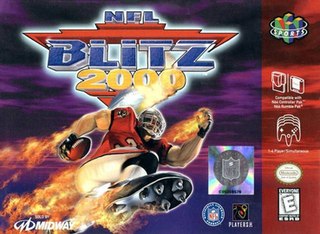
NFL Blitz 2000 is a video game released in the arcades in 1999 and then ported to the PlayStation, Nintendo 64, Dreamcast, Microsoft Windows, and Game Boy Color. It is the third game in the NFL Blitz series.

Perfect Dark is a 2000 action game developed and published by Rare for the Game Boy Color. As a direct prequel to its Nintendo 64 counterpart, the game follows agent Joanna Dark as she completes her training at the Carrington Institute research centre and uncovers information against rival corporation dataDyne. The gameplay revolves around shooting opponents and completing objectives such as rescuing hostages or recovering items. The game also includes a multiplayer mode where two players may compete against each other in several deathmatch modes.

Heroes of Might and Magic is a series of games that were remade for the Game Boy Color. They are based on early games in the original Heroes of Might and Magic series. The remakes were developed by KnowWonder and published by The 3DO Company.
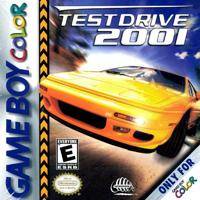
Test Drive 2001 is a racing video game developed by American studio Xantera and published by Infogrames exclusively for Game Boy Color. It is the last game in the series to be available on Game Boy Color, and the last on a Nintendo platform in general until the upcoming release of Test Drive Unlimited Solar Crown.

Retro Atari Classics is a collection of Atari video games for the Nintendo DS developed by American studio Taniko and released in 2005 by Atari. The game features classic Atari games as well as remixed versions of each of the selections. The game's development faced challenges of working with the then-changing prototype Nintendo DS hardware. The game received mixed reviews from critics.

Command and Destroy is a real-time strategy video game developed by Cypron Studios and published by Destination Software Inc. and Zoo Digital Publishing for the Nintendo DS.
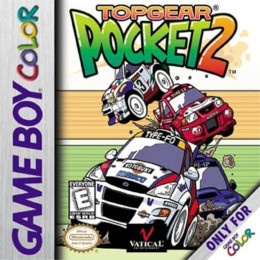
Top Gear Pocket 2, known in Europe as Top Gear Rally 2, is a racing video game developed by Kemco and released for the Game Boy Color handheld console, released on December 17, 1999 in Japan and in 2000 across other regions. It is a sequel to Top Gear Pocket.

















